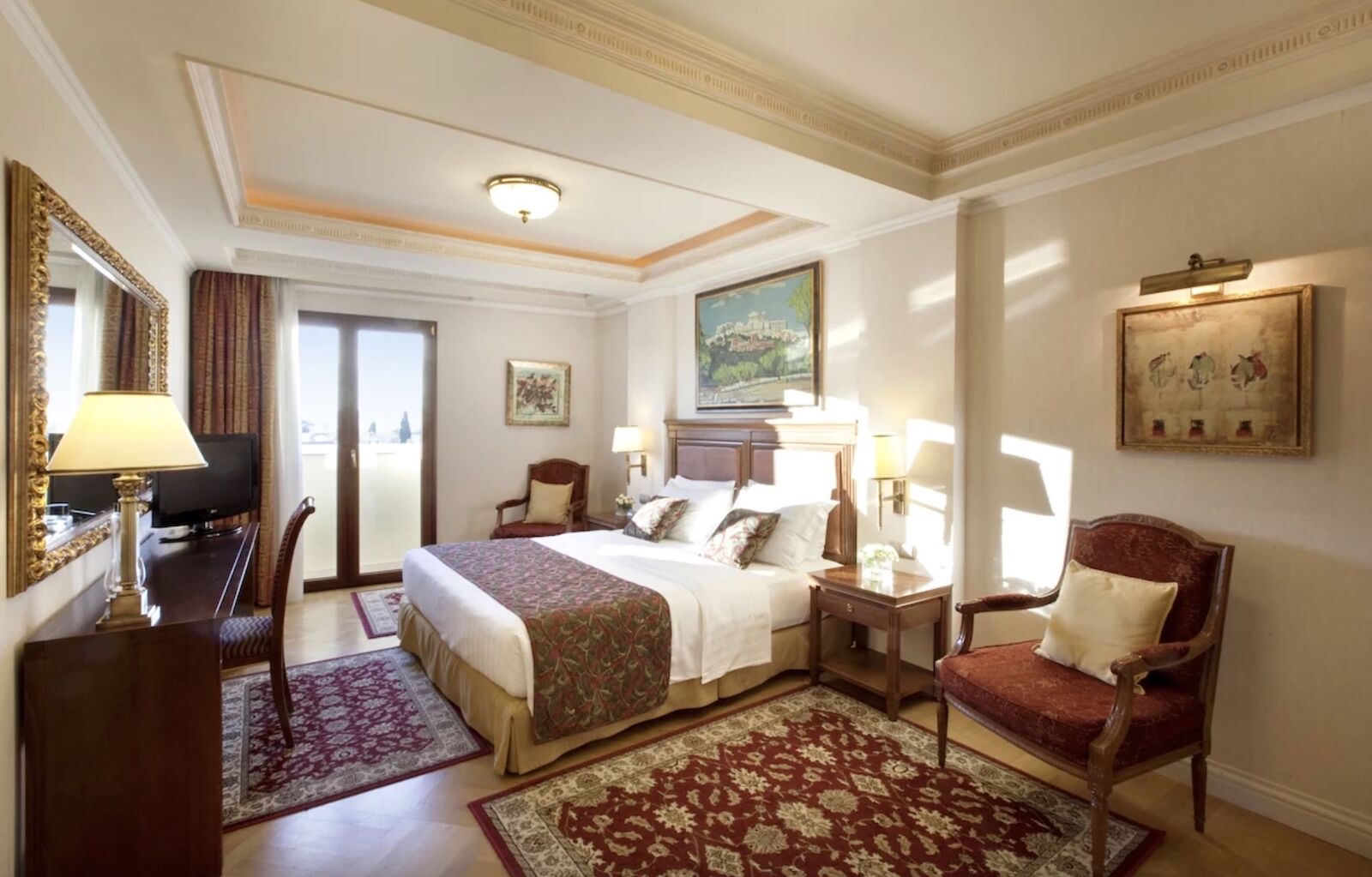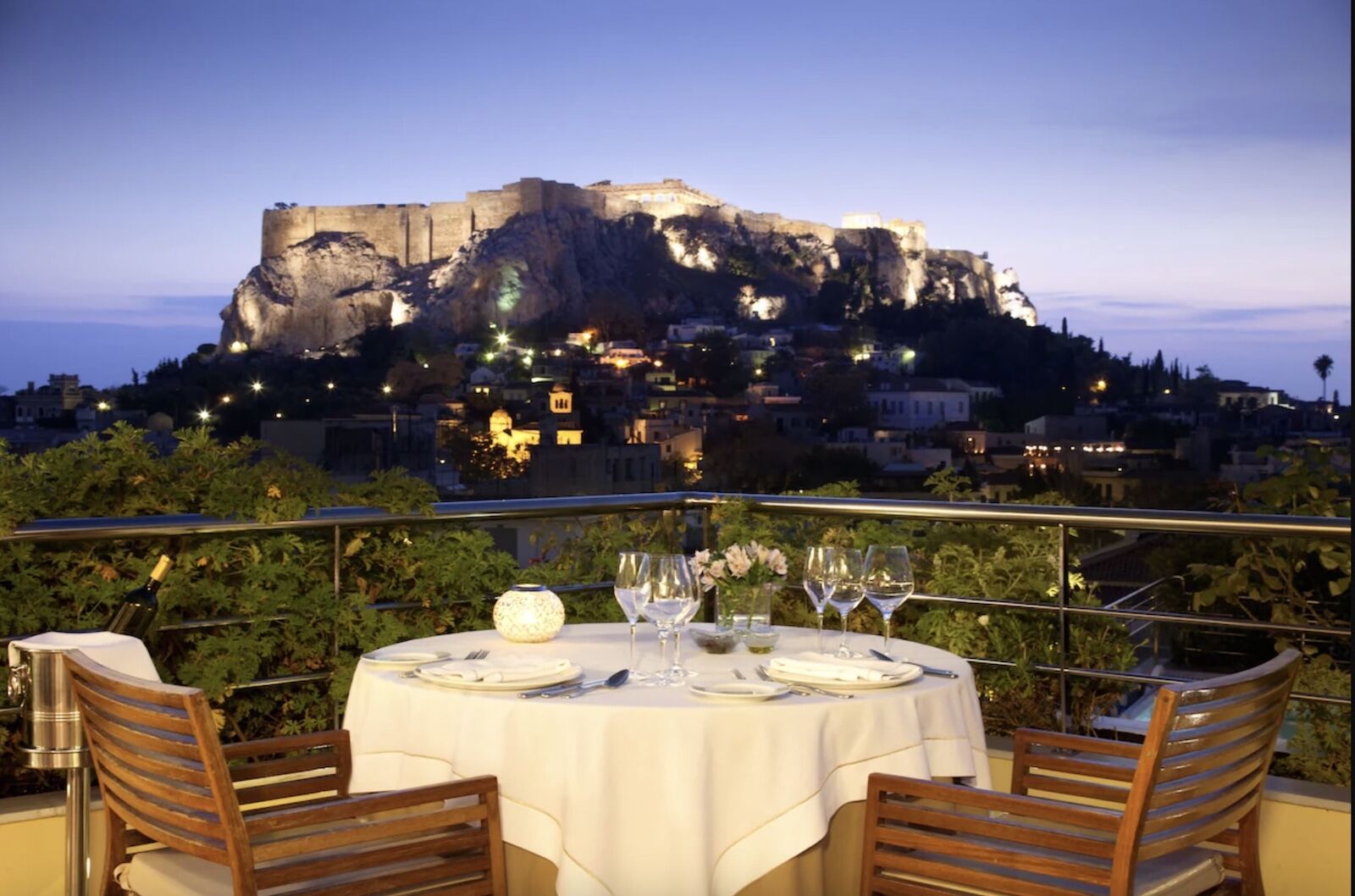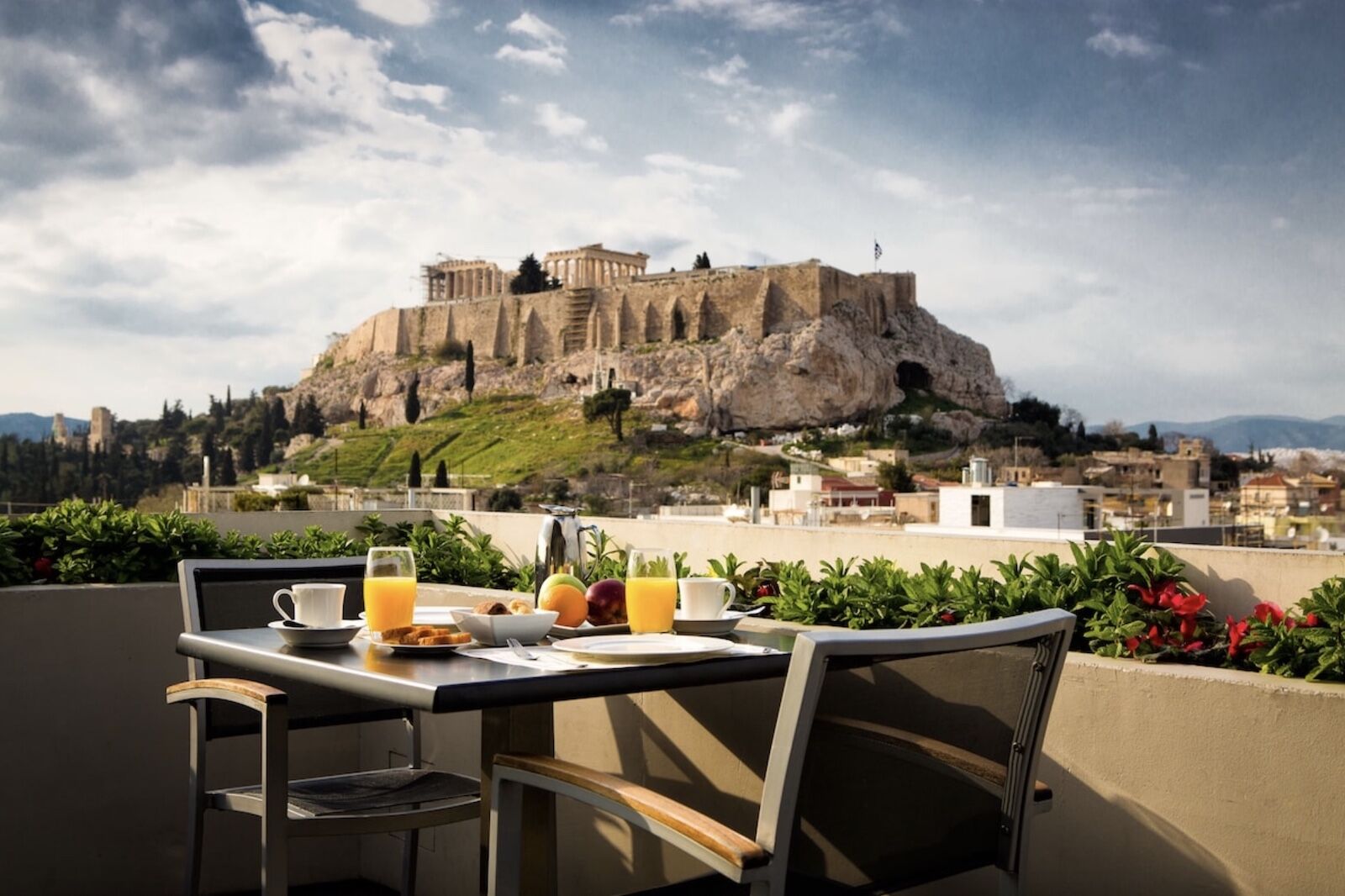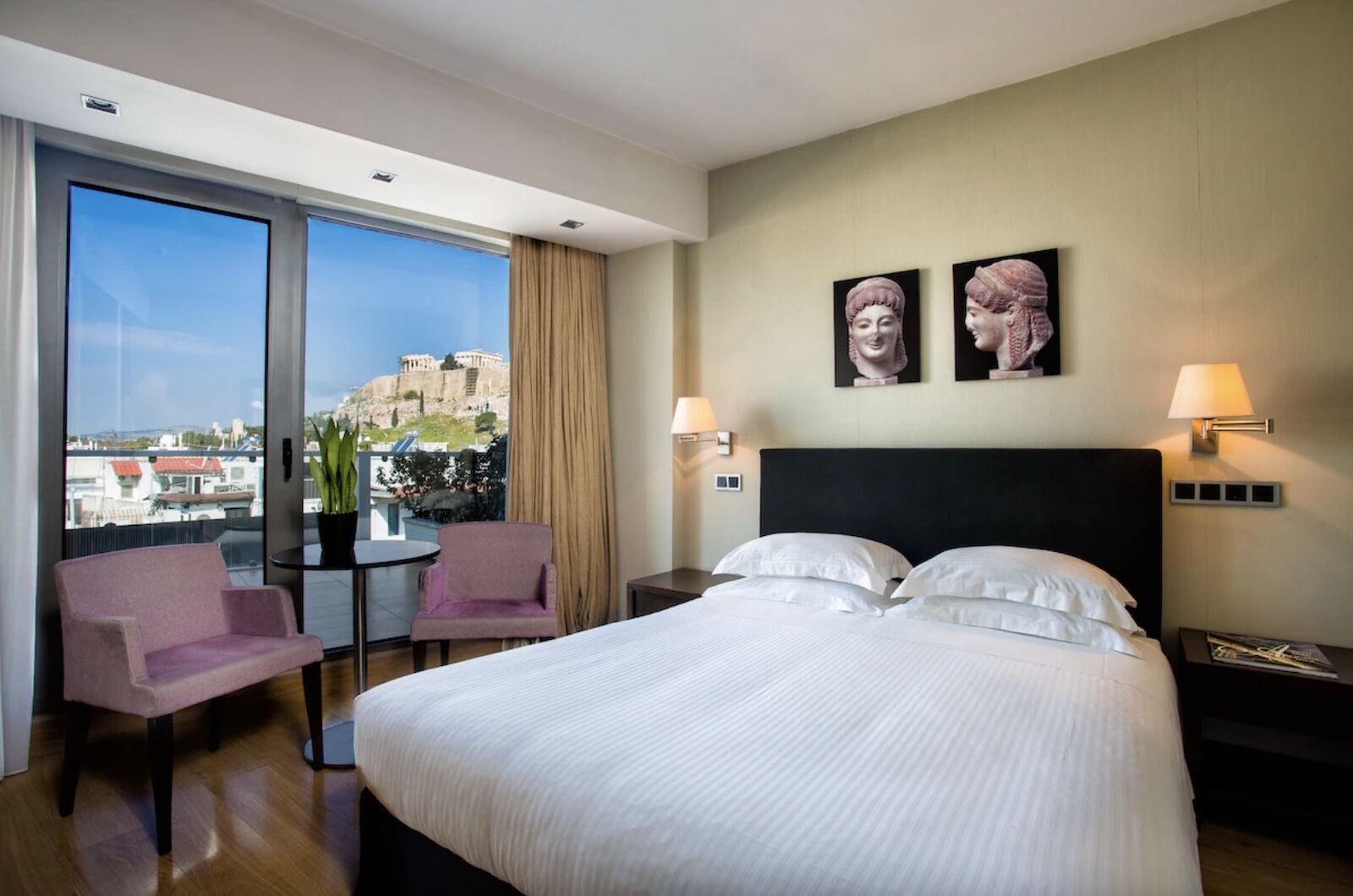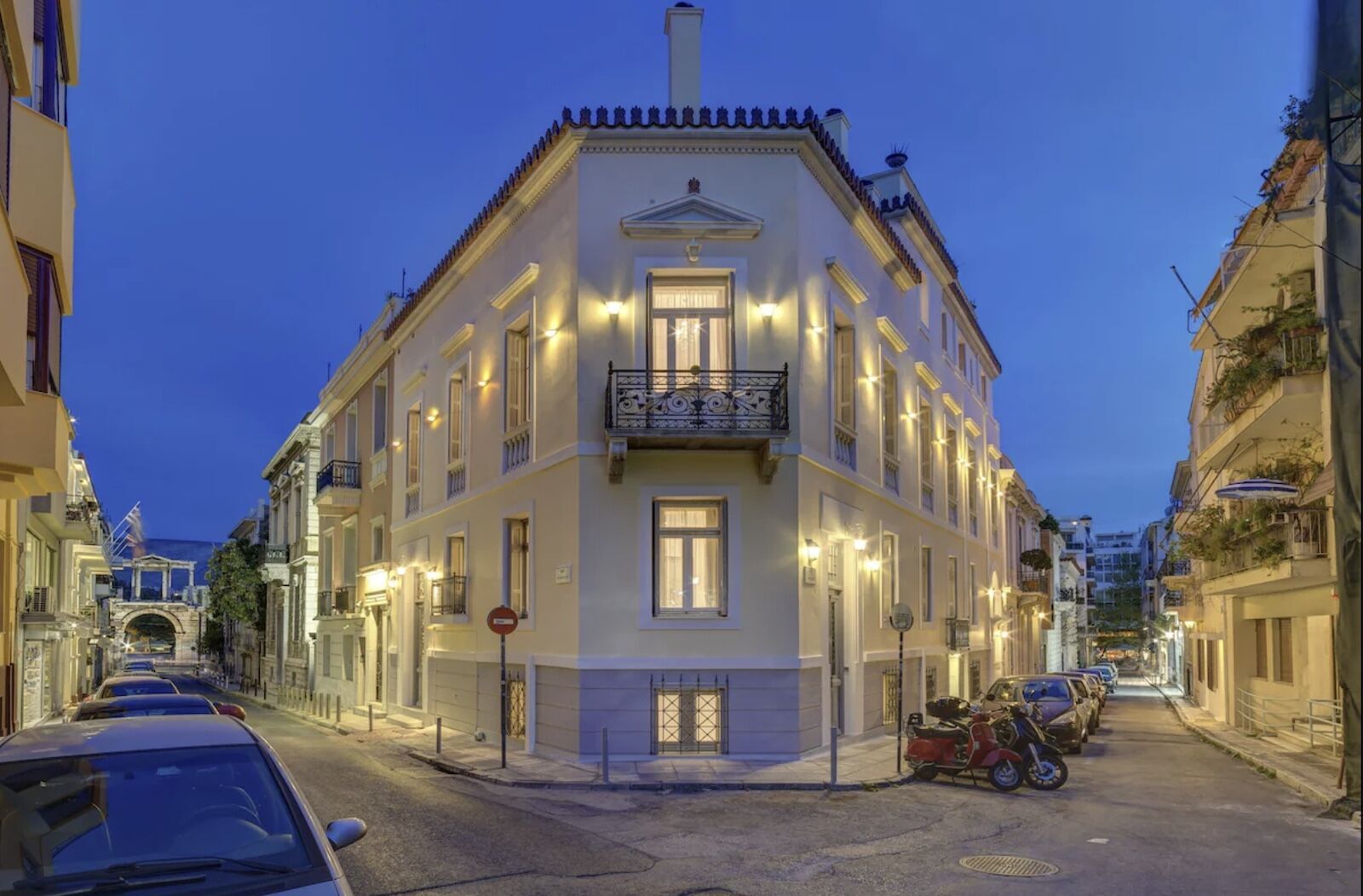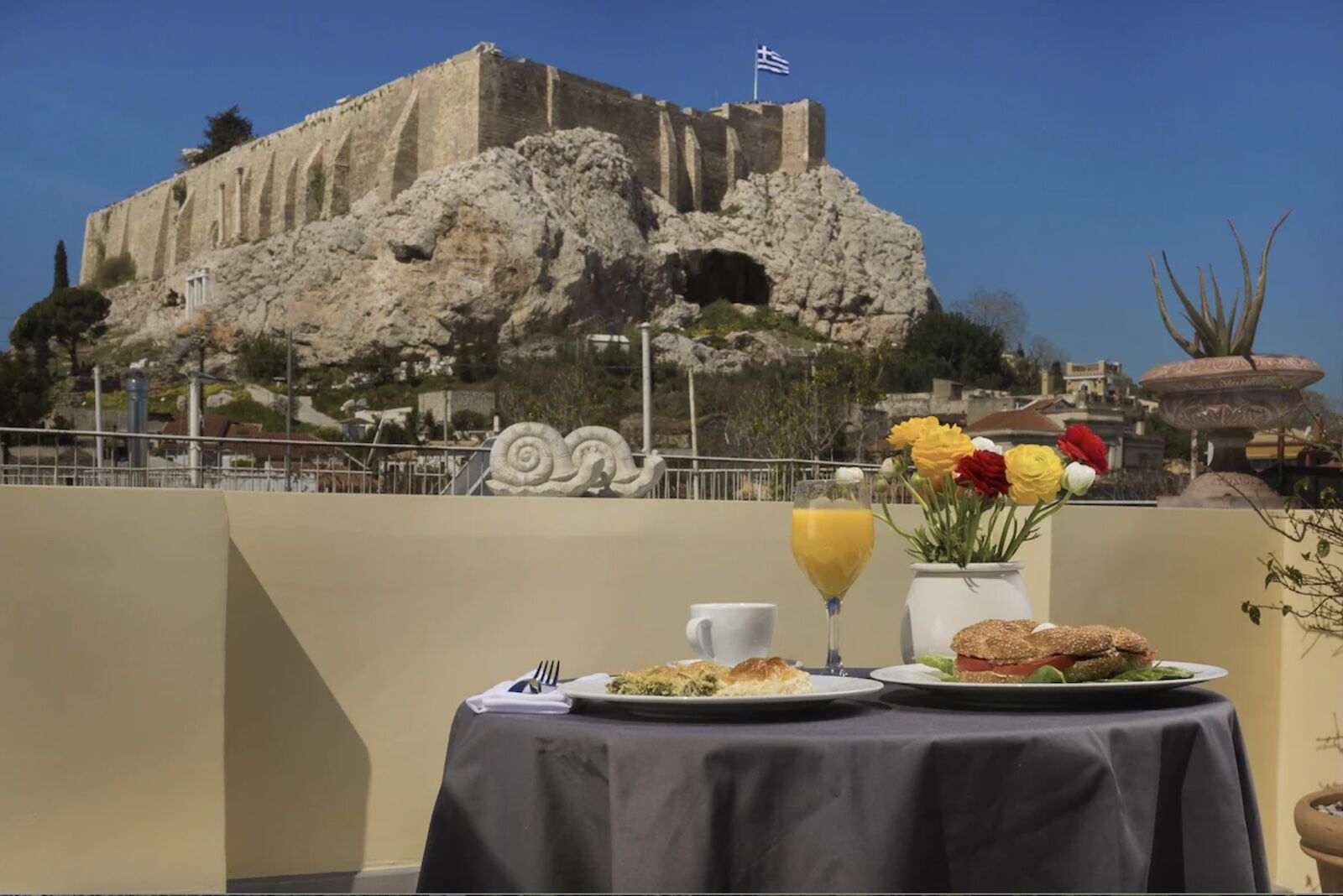Being the greatest artistic complex coming out of Greek antiquity, visitors could do with some help to understand the Acropolis’ significance and appreciate its monuments’ beauty. To make your Acropolis visit as dazzling as the rest of your stay in Athens, we asked two professional tour guides, Jessica Van Der Does and Dr. Dimitria Papadopoulou, to provide some tips on how to make your one-day visit a cinch.
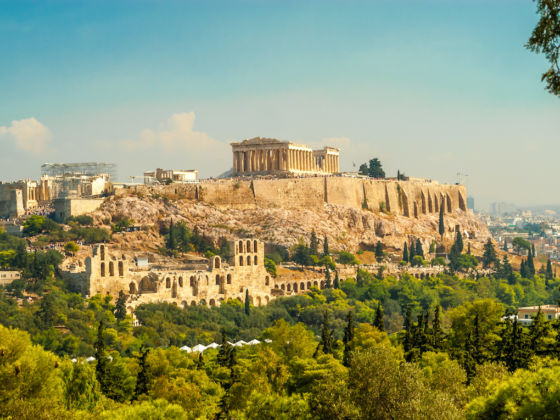
The Most Famous Archeological Site in the World Dominates This European Capital City
Jessica Van Der Does has a BA and an MA in archaeology. Van Der Does has been working in the tourism sector in Greece since 2014, and she is the co-founder of Little Owl Tours, which offers guided tours of Athens in Dutch and German.
Papadopoulou is a tourist guide and a national trainer of tourist guides in Greece, licensed by the World Federation of Tourist Guides Associations. She accompanies tourists all over Greece.
- What is the Acropolis?
- What does the term “acropolis” mean?
- The #1 piece of advice for visiting the Acropolis
- The best times to visit the Acropolis
- How long should I spend at the Acropolis?
- Free admission to the Acropolis
- Guided tours of the Acropolis
- Where to start your visit to the Acropolis
- Must-see monuments at the Acropolis and why they matter
- More monuments to visit if you have time
- The best hotels near the Acropolis
What is the Acropolis?
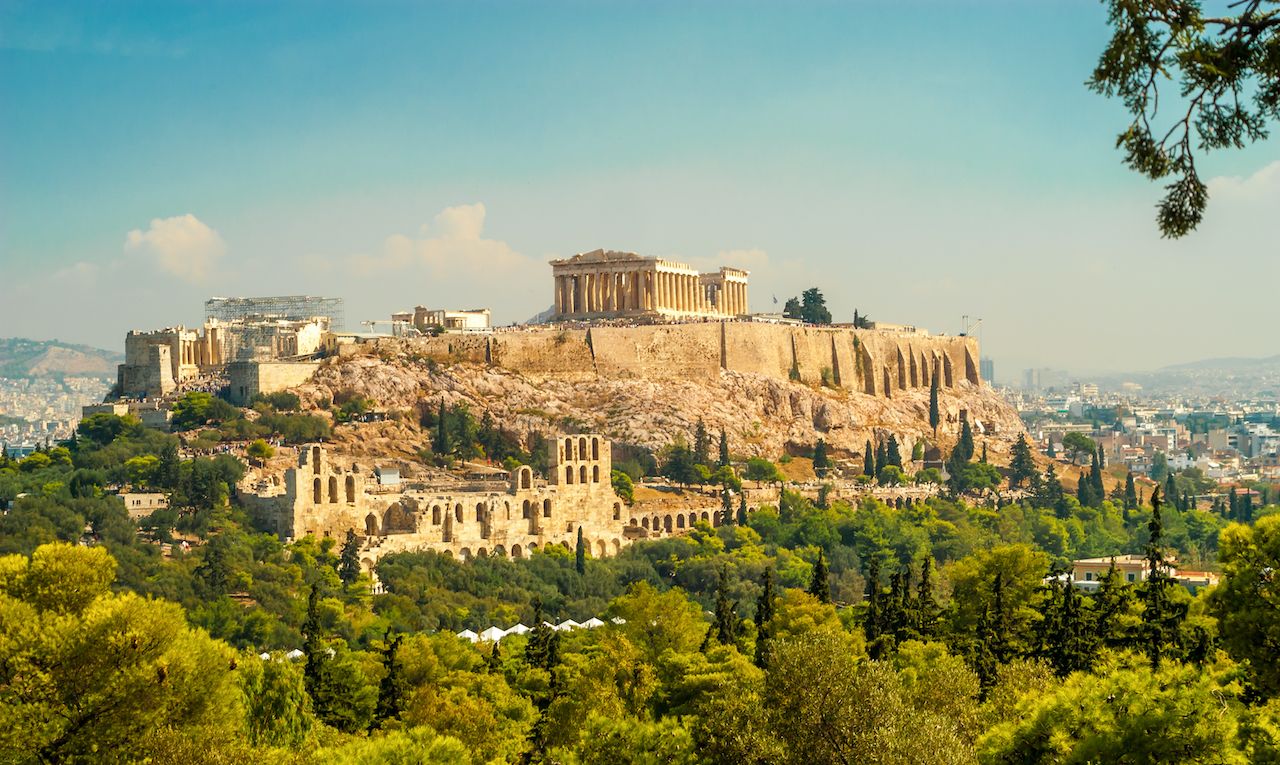
Photo: milosk50/Shutterstock
The Acropolis is an extraordinary archaeological site comprised of several centuries-old monuments, such as the Temple of Athena Nike, the Erechtheion, and the Parthenon. The monuments of the Acropolis were built to celebrate the empire of Athens after it triumphed over the Persians. The white-marble buildings date back to the fifth century BC, which is also known as the Golden Age of Athenian culture. It is during this period that democracy, philosophy, architecture, and the arts, including theater, flourished in the city. Even though the architectural wonders have been prone to damages due to wars, accidents, and natural disasters, the ongoing restoration and conservation project is giving visitors an excellent idea of their original design.
What does the term “acropolis” mean?
An acropolis is the fortified section of an ancient Greek city. An acropolis is usually built on a hill.
“Acro” in Greek signifies height, while “polis” means city. Acropolis can be simply translated as “city on a hill”.
The #1 piece of advice for visiting the Acropolis
You don’t have to be an experienced trekker to reach the Acropolis. That said, Van Der Does and Papadopoulou strongly advise that you wear comfortable shoes and are mindful of the slippery, worn rocks on the way to the top. In the summer, remember also to pack your hat, sunscreen, and water, especially if you are visiting after 10:00 AM or before 5:00 PM when it’s very hot.
You can purchase your ticket at either of the two ticket offices stationed at the central gate called “Propylaea” or outside the Theatre of Dionysus, on the south slope of the Acropolis, but to avoid any long lines, we suggest that book your ticket online for fast-track access through both entrances. Reserve a single-use ticket valid for one admission to the Acropolis for the selected date, or a combined ticket, valid for seven sites (Acropolis, Ancient Agora, Roman Agora, Hadrian’s Library, Olympieion, Kerameikos, and Aristotle’s School) for five consecutive days.
The best times to visit the Acropolis
The operation hours of the Acropolis, as of most archaeological sites in Greece, are different during the summer and winter months. To avoid crowds and the sunshine during summertime, Van Der Does recommends visiting the Acropolis as soon as it opens, at 8:00 AM, or after 5:00 PM. “In winter, you can visit anytime as it’s neither too busy nor too hot,” she explains.
Free admission to the Acropolis
If you are in Athens on any of the following days, the Acropolis offers free admission to all visitors:
- March 6
- April 18
- May 18
- The last weekend of September
- October 28
- Every first Sunday from November 1 to March 31
How long should I spend at the Acropolis?
Once you have obtained your ticket to the Acropolis, it takes about 20 minutes of a moderately paced walk from the entrance to the top. For a fulfilling visit, be prepared to spend at least two hours on the Acropolis summit.
Guided tours of the Acropolis
There are no audio guides available in the Acropolis, but you can listen to Rick’s Steve’s 54-minute audio tour. Of course, it wouldn’t match the information you’d receive from a local expert guides on the glory of ancient Greece. Papadopoulou firmly recommends a guided tour because “you receive a deep knowledge of the site, even if you have a limited amount of time at your disposal. A guide gives meaning to the site and interprets the cultural heritage. They can even organize a tailor-made tour to accommodate your needs, interests, and health conditions.”
If you aren’t visiting the Acropolis as part of an all-inclusive holiday, you can contact a licensed tourist guide directly through the official page of the Association of Licensed Tourist Guides.
Where to start your visit to the Acropolis

Photo: saiko3p/Shutterstock
A visit to the Acropolis goes hand in hand with a tour of the Acropolis Museum. To get an overview of the importance of the temples and statues on the Acropolis, it is highly recommended to visit the museum first and then the Acropolis and its monuments.
Allow yourself no less than two hours inside the museum, and if you must skip something, let it be the temporary exhibition on the ground floor.
Start your visit from the first floor, where a unique collection of statues dating back to the Greek archaic period is on display. “This collection is well-preserved because the statues were buried in the Acropolis hill, protected from natural disasters and human impact,” explains Van Der Does.
The entire top floor of the museum is dedicated to the Parthenon temple and showcases the sculptural decoration of the monument. The inner frieze displayed at the museum consists of the actual decorative elements used to decorate the Parthenon and cast copies. The rest of the original blocks are to be found at British Museum, the Louvre (one block), and other museums throughout the world. Note that the decorative elements you see on the Parthenon at the Acropolis are cast copies.
Check the museum’s opening hours and fees before you organize your visit, as they change throughout the year. For a faster entrance in the museum, buy your tickets online via a straightforward e-ticketing service.
If you are worried about big crowds, bear in mind that on weekends, the museum cafe and restaurant are meeting spots for Athenians, generating a busier vibe than usual. Throughout the year, Friday nights in the museum restaurant are always a hit, as the museum stays open until 10:00 PM. The unobscured views of the Acropolis, gourmet dishes, and exceptional wine will cure your museum fatigue instantly.
Must-see monuments at the Acropolis and why they matter
There are four main monuments on top of the Acropolis hill: the Propylaea, the Temple of Athena Nike, the Erechtheion, and the Parhenon.
The Propylaea
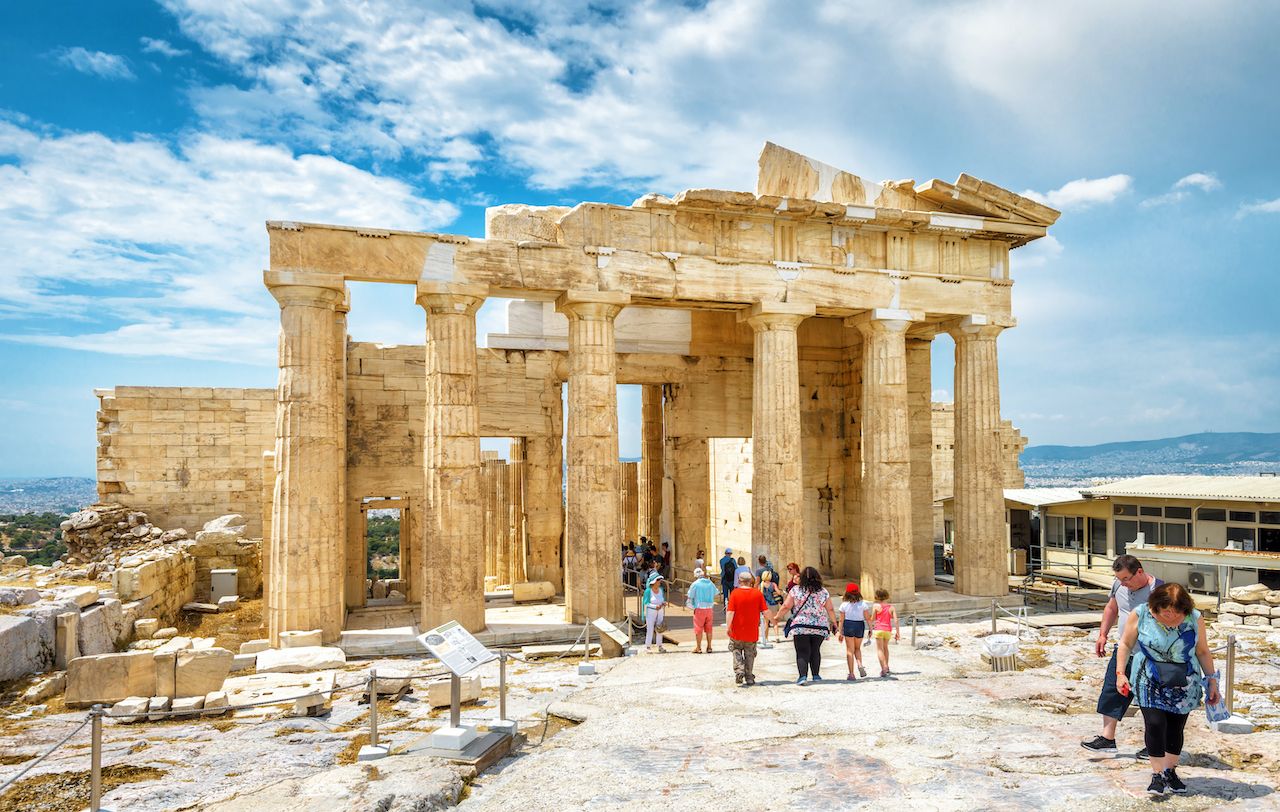
Photo: Viacheslav Lopatin/Shutterstock
Propylaea is the gate to the site. Propylaea was the physical division between the secular and spiritual parts of Athens. To reach the Propylaea, you must climb numerous steep steps, which were added to the original design in 52 AD by the Roman Emperor Claudius. In Greece’s more recent history, Propylaea has served as the palace of a Byzantine bishop, a Florentine palace, and the residence of a Turkish governor. Yet, rigorous restorations have ensured that Propylaea has regained its glory.
The Temple of Athena Nike
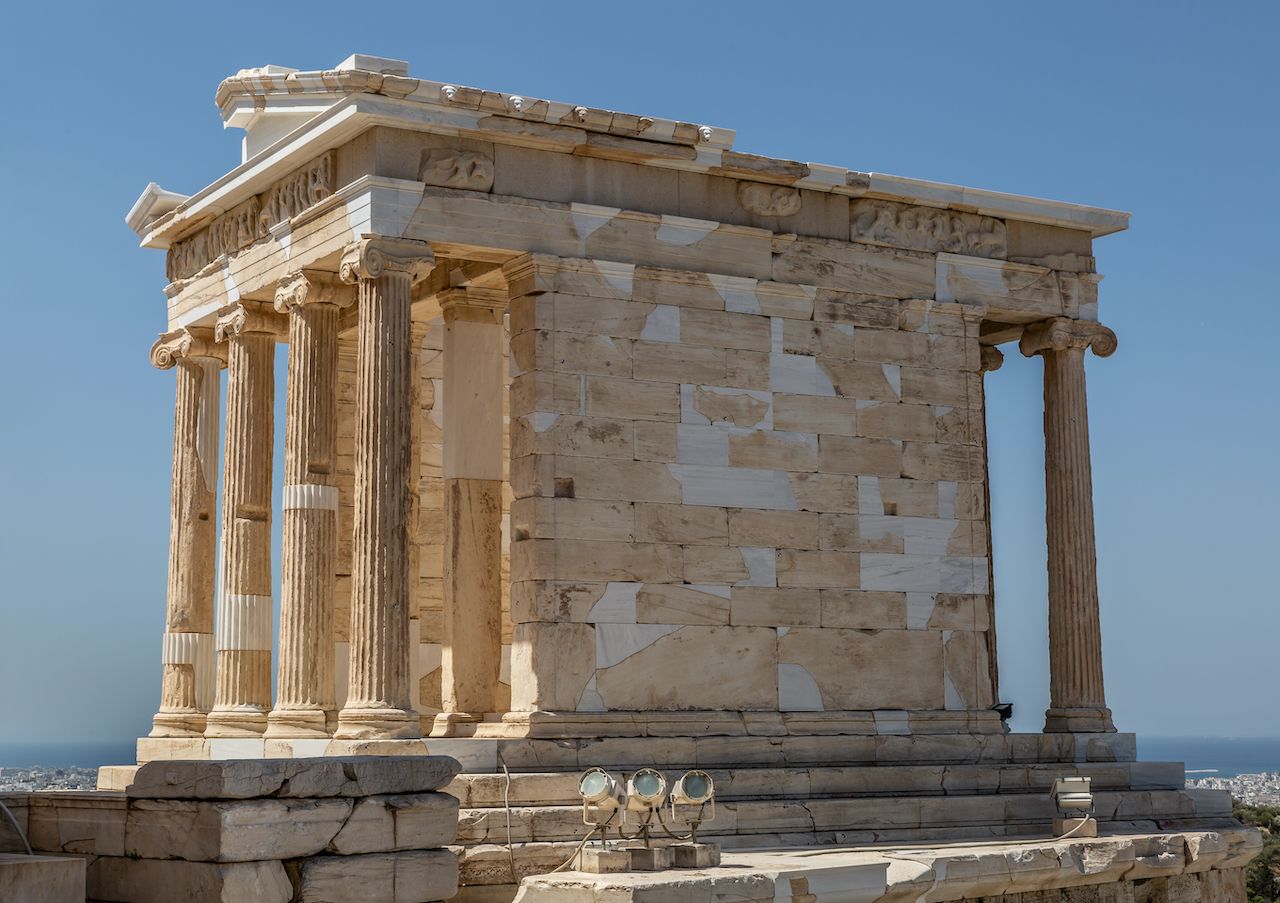
Photo: oscarporras/Shutterstock
The Temple of Athena Nike (meaning “victorious in war Athena”) at the southwestern edge of the Acropolis hill is the smallest temple of all four. Worshippers of Athena were performing their rituals at an altar, outside the temple, and could only catch sight of the goddess’s sculpture in the center of the temple through the space between the four columns. The temple, which commemorates a victory against the Persian Empire, was designed by architect Kallikrates, who supervised the construction of the Parthenon. Note that you shouldn’t confuse Athena Nike (Victorious Athena) with Nike, the goddess of victory. An easy way to differentiate the two is the wings or lack thereof on the statues that represent the two deities: Athena Nike is always wingless, as opposed to goddess Nike.
The Erechtheion
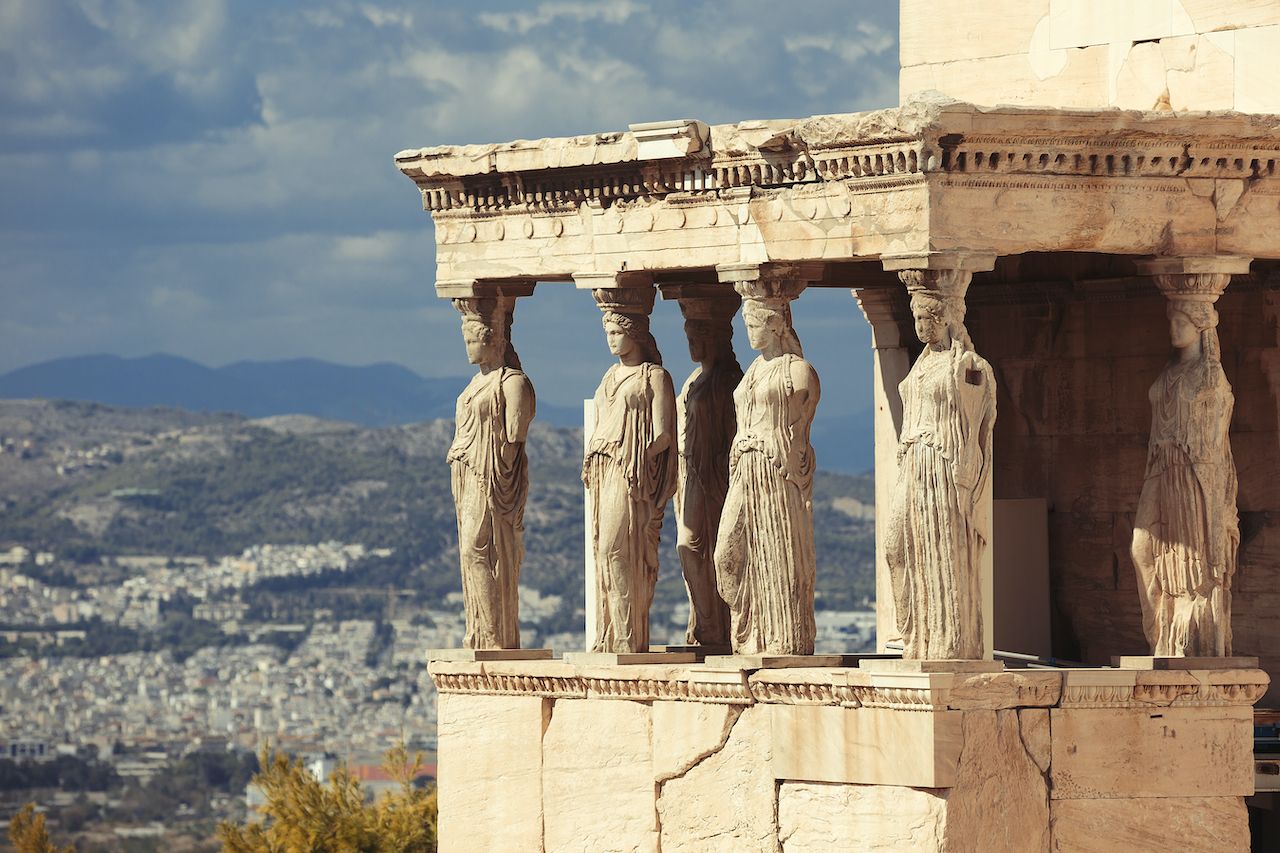
Photo: Anastasios71/Shutterstock
Adjacent to the Parthenon, the Erechtheion is characterized by slender columns. Despite being the temple of Athena, who is the protector goddess of the city, the Erechtheion was named after the semi-god king of Athens, Erechtheus. In one of the rooms of the temple was an olive-wood statue of Athena, which was said to have dropped from the heavens.
The highlight of the Erechtheion is the south porch of the maidens, the frieze of which is held by six meticulously sculpted female figures known as caryatids or kore. Five of the original caryatids are in the Acropolis Museum and one is in the British Museum. All the caryatids at the Acropolis are replicas.
The Parthenon

Photo: anyaivanova/Shutterstock
The Parthenon is the most iconic building of ancient Greek architecture, and, partly due to its size, it outshines all the buildings on the Acropolis. Like all the monuments on the Acropolis, the Parthenon was part of Perikles’ (Athens’ political leader) development plan, showcasing the city’s magnificence and sense of aesthetics. The Parthenon was built in the fifth century BC and was home to a 39-foot-tall, ivory, and gold sculpture of Athena. It is unknown what happened to the statue, but the most accurate replica is (surprisingly) in Nashville, Tennessee, along with a full-scale reproduction of the Parthenon.
Other decorations included an outer frieze made carved marble blocks (also known as metopes) demonstrating scenes from mythology. Those metopes are on display at the Acropolis Museum. On the inner frieze, artist Phidias chose to depict the Great Panathenaea, a musical and athletic festival in honor of Athena. The inner frieze was made of over 100 metopes; today, some of it is in the Acropolis Museum, some in the British Museum, and one block in the Louvre, while precise replicas are adorning the Parthenon. The triangular upper parts of the Parthenon were decorated with colossal sculptures representing the birth of Athena from the head of Zeus, and the fight between Poseidon and Athena over the land of Athens.
In its long existence, the Parthenon went through a lot. In early Christianity, the Parthenon was converted into a church, and in the 15th century, when Athens was conquered by the Ottoman Empire, it was changed into a mosque. During the Sixth Ottoman-Venetian War, Turks used the Parthenon to store gunpowder, and in a Venetian bombardment, the damage was immense. More vandalism and looting occurred through World War II when the monument served as barracks for German soldiers.
More monuments to visit if you have time
If you are not on a time crunch, Van Der Does suggests that you visit the south slope of the Acropolis to witness the foundations of Greek theater in the remains of the Theatre of Dionysus, and that you attend a performance at the Odeon of Herodes Atticus.
The Theatre of Dionysus

Photo: Aleksandar Todorovic/Shutterstock
At the bottom of the south slope of the Acropolis is the Theatre of Dionysus, the oldest known theater in the world. As its name suggests, it was dedicated to Dionysus, the god of wine and the patron of drama. Here, in the fifth century BC, distinguished Greek poets such as Aristophanes, Euripides, and Sophocles saw the premieres of their plays along with 17,000 other spectators as part of playwright competitions. The theater was initially made of wood, but in the fourth century BC, it was given a stone makeover.
Odeon of Herodes Atticus
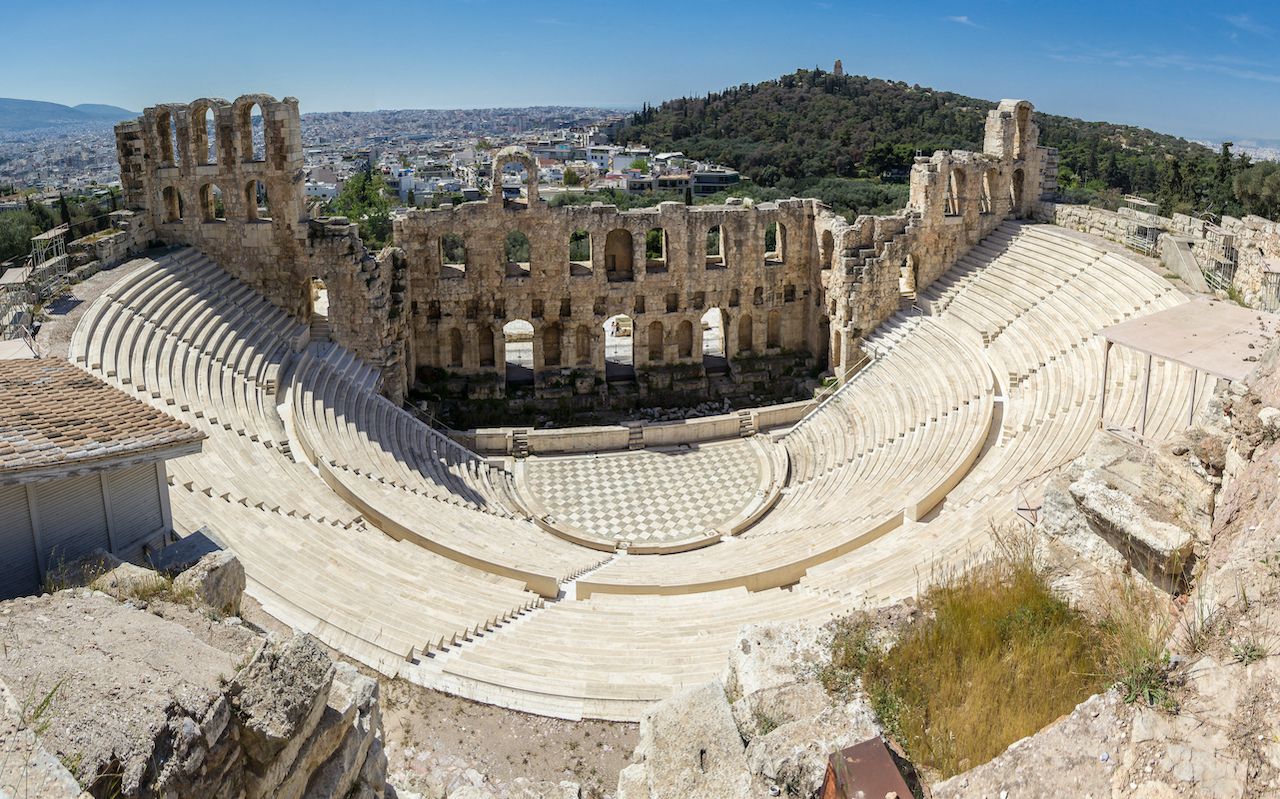
Photo: Kamil Saks/Shutterstock
Next to the Theatre of Dionysus, at the foot of the Acropolis, is the Odeon of Herodes Atticus (commonly known as Herodeon). The Roman theater was built between 160 AD and 174 AD by the Roman senator, Herodes Atticus in memory of his late wife, Rigilla. The original design accommodated a circular orchestra, which is now a marble-paved semi-circle. The auditorium is made of 35 rows and seats 4680 people. Since its restoration in the 1950s, Herodeon has hosted legendary artists such as Nana Mouskouri, Luciano Pavarotti, and Frank Sinatra, to name a few. Every summer, from June to October, Herodeon is the prime venue for the Athens and Epidaurus Festival.
The best hotels near the Acropolis
If you’d rather stay in a rental than in a hotel when in Athens, Greece, check out Matador’s selection of Athens Airbnbs for a unique and cozy stay.
We hope you love the spaces and stays we recommend! Just so you know, Matador may collect a small commission from the links on this page if you decide to book a stay.
Electra Palace Athens
The Electra Palace Hotel is located in the sought-after Plaka district of Athens and is only a 14-minute walk to the entrance of the Acropolis. The highlights of this elegantly decorated hotel is the rooftop garden where guests can dine while taking in the incredible views of the Acropolis. The rooftop also has a large pool and a bar. There is an indoors bar, a spa area, a gym.
Athens Gate Hotel
The Athens Gate Hotel is a four-star property located in the historic district of Athens. As such, it is only 13 minutes away from the Acropolis on foot and located directly opposite the Temple of Olympian Zeus. The hotel’s rooftop restaurant and bar, on the 8th floor, offers pectacular panoramic view of the Acropolis.
Home & Poetry
Home & Poetry is an intimate hotel of only 16 rooms located in the district of Plaka, only 12 minutes on foot from the Acropolis. The rooftop terrace has a restaurant and a bar, and features beautiful views of the Acropolis.

